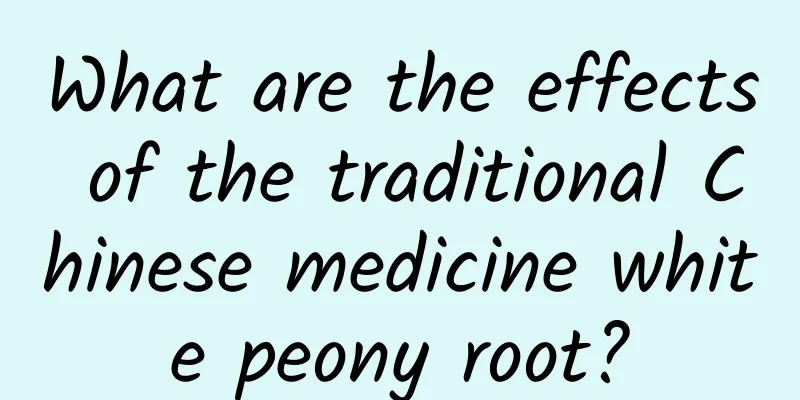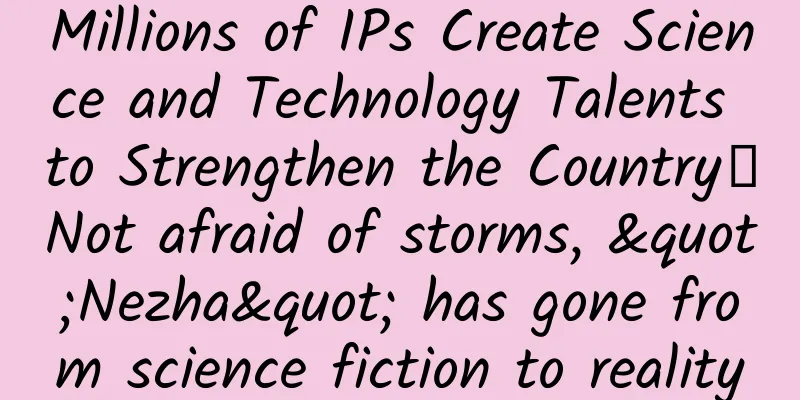The efficacy and function of Fengqing Millettia reticulata

|
There are many common Chinese medicinal materials in life, and Fengqing Millettia reticulata is one of them. However, many people are not very clear about Fengqing Millettia reticulata. Therefore, before choosing to eat it, you need to understand the effects and functions of Fengqing Millettia reticulata. [Alias] Millettia reticulata, Millettia spatholobi, Millettia yunnanensis [Source] Medicinal material source: The vine stem of Schisandra chinensis or Schisandra heteromorpha in the Schisandraceae family. [Original form] 1. Climbing shrub, 3-6m long. Branches brown. Leaves are alternate; petiole 8-18mm long; leaves are papery; leaf blades are elliptical, 7-13cm long, 2.5-6.5cm wide, with pointed or mucronate tips, obtuse bases, nearly entire or serrated margins, dark green above and green below. The flowers are unisexual, dioecious, with 14-18 perianths, pale yellowish white with pink inside, 2-3 outer perianths, ovate-elliptical, 5-10mm long, 4-7mm wide, the largest one is elliptical-oblong or obovate, 13-19mm long, 8-11mm wide, the innermost perianth is about 10mm long and 5mm wide; the stamen group is nearly spherical, with about 60 stamens in 7-8 rows; the pistil group is nearly spherical, with 60-75 carpels. The aggregate fruit is nearly spherical, with a diameter of up to 3 cm. There are 2-5 seeds, which are flat on both sides and nearly kidney-shaped. The flowering period is May-June, and the fruiting period is August-October. [Habitat distribution] Ecological environment: 1. Growing in tree and shrub forests at an altitude of 1200-2500m. [Properties] Identification of properties (1) The stem of Schisandra chinensis vine is cylindrical, slightly curved or twisted, with a diameter of 1.8-2.9 cm. The surface is gray-brown, and the peeling cork is dark red-purple. The cork is relatively thick, and the coarse ones have many cracks, which are cracked, and the thin ones have longitudinal grooves. It is often attached with mosses and lichens. It is hard and not easy to break. The cross-section of the cortex is narrow, reddish-brown, and fibrous. The xylem is wide, light brown, and has dense and scattered ducts. The pith is small, dark brown, and hollow, with a unique aroma and a bitter and astringent taste. 【Chemical composition】 1. The aerial parts of Schisandra chinensis contain the lignan components interiorin[1,2], kadsurin, interiorin B, C, D, isointeriorin and β-sitosterol[2]. [Pharmacological action] 1. Coagulation effect: 0.3g/ml of Schisandra chinensis water extract can prolong the prothrombin time of rabbit brain; its ethanol extract 0.5g/ml can resist the platelet aggregation induced by collagen, with an inhibition rate of 33.6%; the effect of Schisandra chinensis on red blood cell aggregation is concentration-related, 0.02g/ml decoction inhibits red blood cell aggregation, and 0.002g/ml promotes its aggregation. 【Functions and indications】Produces blood and regulates blood; a seed for regulating menstruation. It is mainly used for deficiency of qi and blood; numbness and paralysis of limbs; rheumatic pain; infertility due to deficiency; spermatorrhea and leukorrhea; irregular menstruation; leukorrhea with red or white discharge [Usage and Dosage] For oral use: decoct in water, 15-30g; or boil into a paste, 3-6g each time, drink with boiled water or wine, twice a day. [Additional prescription] The juice of the vine is red like chicken blood, hence the name Millettia reticulata. It is named after the place where it is produced due to its different varieties. : : : : : : : : : : : : : : : : : : : : : : : : : : : : : : : : : : : : : : : : : : : : : : : : : : : : : : : : : : : : : : : : : : : : : : : : : : : : : : : : : : : : : : : : : : : : : : : : : : : : : : : : : : : : : : : : : : : : : : : : : : : : : : : : : : : : : : : : : : : : : : : : : : : : : : : : : : : : : : : : : : : : : : : : : : : : : : : : : : : : : : : : : : : : : : : : : : : : : : : : : : : : : : : : : : : : : : : : : : : : : : : : : : : : : : : : : : : : : : : : : : : : : : : : : : : : : : : 【Excerpt】 Chinese Materia Medica The above is a detailed introduction to the effects and functions of Fengqing Millettia reticulata. Its selection should be based on your own needs, so that it will not harm your body and can achieve a good effect in improving the disease. |
<<: The efficacy and function of Chun Bu Jian
>>: The efficacy and role of insect relatives
Recommend
Can you fall asleep quickly by eating more carbohydrates before going to bed? Eat this way if you want to sleep well →
"Eating more carbohydrates before going to b...
Slice Intelligence: Online wine sales grew 63% in 2016
199IT original compilation Data from Slice Intell...
Why can't you remember things before the age of three? Scientists explain
Have you ever had this experience? At a family ga...
Benefits of Codonopsis for Pregnant Women
I believe everyone is familiar with Codonopsis pi...
What nutrients does umbilical cord blood contain?
When it comes to the source of nutrition for babi...
The efficacy and function of kidney calyx golden waist
Traditional Chinese medicine has always been the ...
The efficacy and function of bird's nest
There are so many medicinal herbs in the world, a...
These strange-looking "lumps" turned out to be the weights used by ancient people!
A set of bronze weights from the Yuan Dynasty, ra...
Winter is coming. How should patients with chronic respiratory diseases protect themselves?
Patients with chronic respiratory diseases often ...
The uses and effects of Gynostemma pentaphyllum
Today, the pace of our lives is constantly accele...
After applying it, the skin becomes transparent, and the blood vessels and muscles are clearly visible...
Produced by: Science Popularization China Author:...
Why do plants shed their leaves? It's not that simple to calculate
Poets can't help but feel sad when facing the...
What's the secret behind the numbers on the bottom of bottled water? Many people use it wrongly...
We drink plastic bottled water and bottled bevera...
The efficacy and function of mountain orange leaves
Everyone is familiar with mountain citrus leaves....
Effects of pine pollen
Pine pollen is not very common to many people. It...









